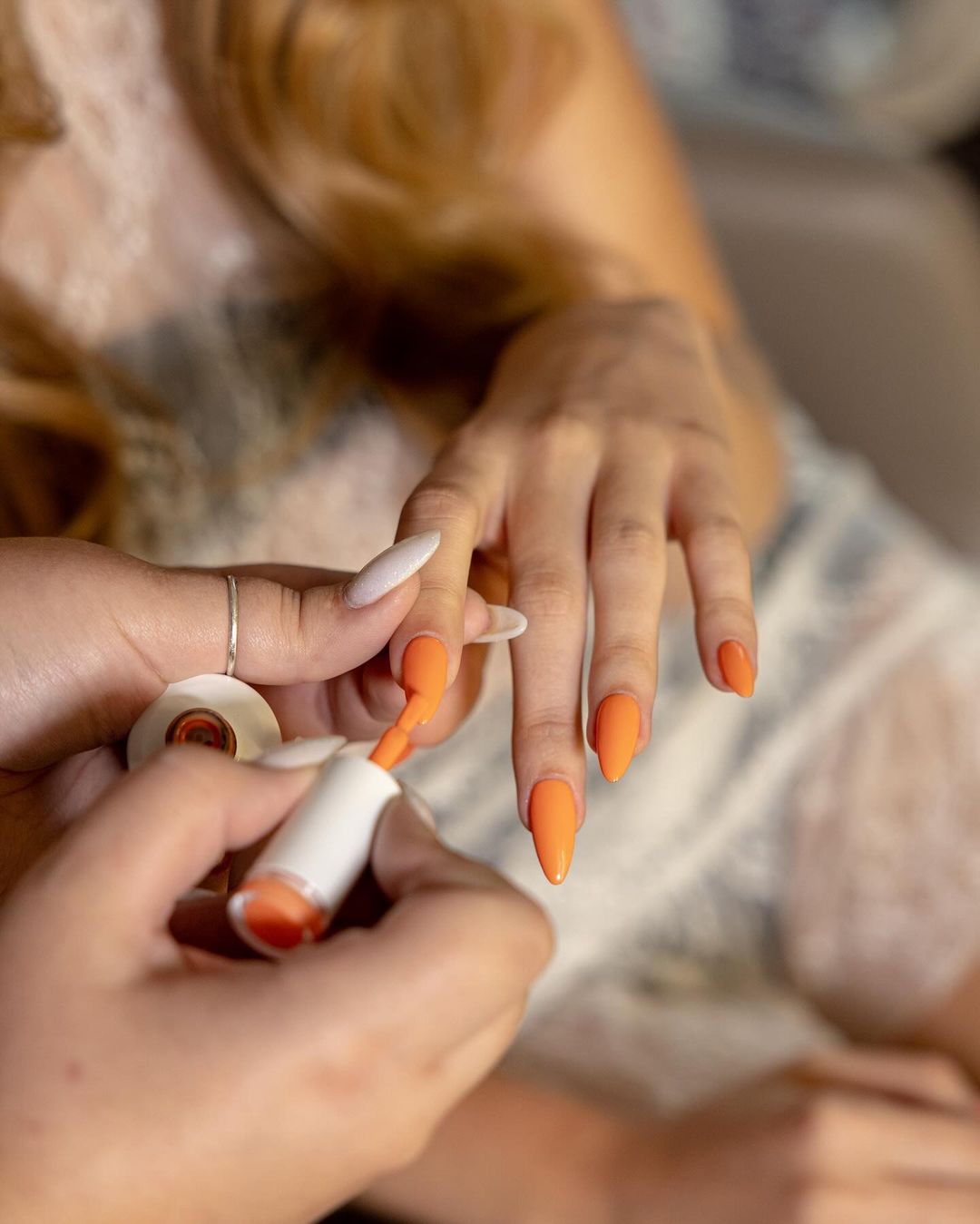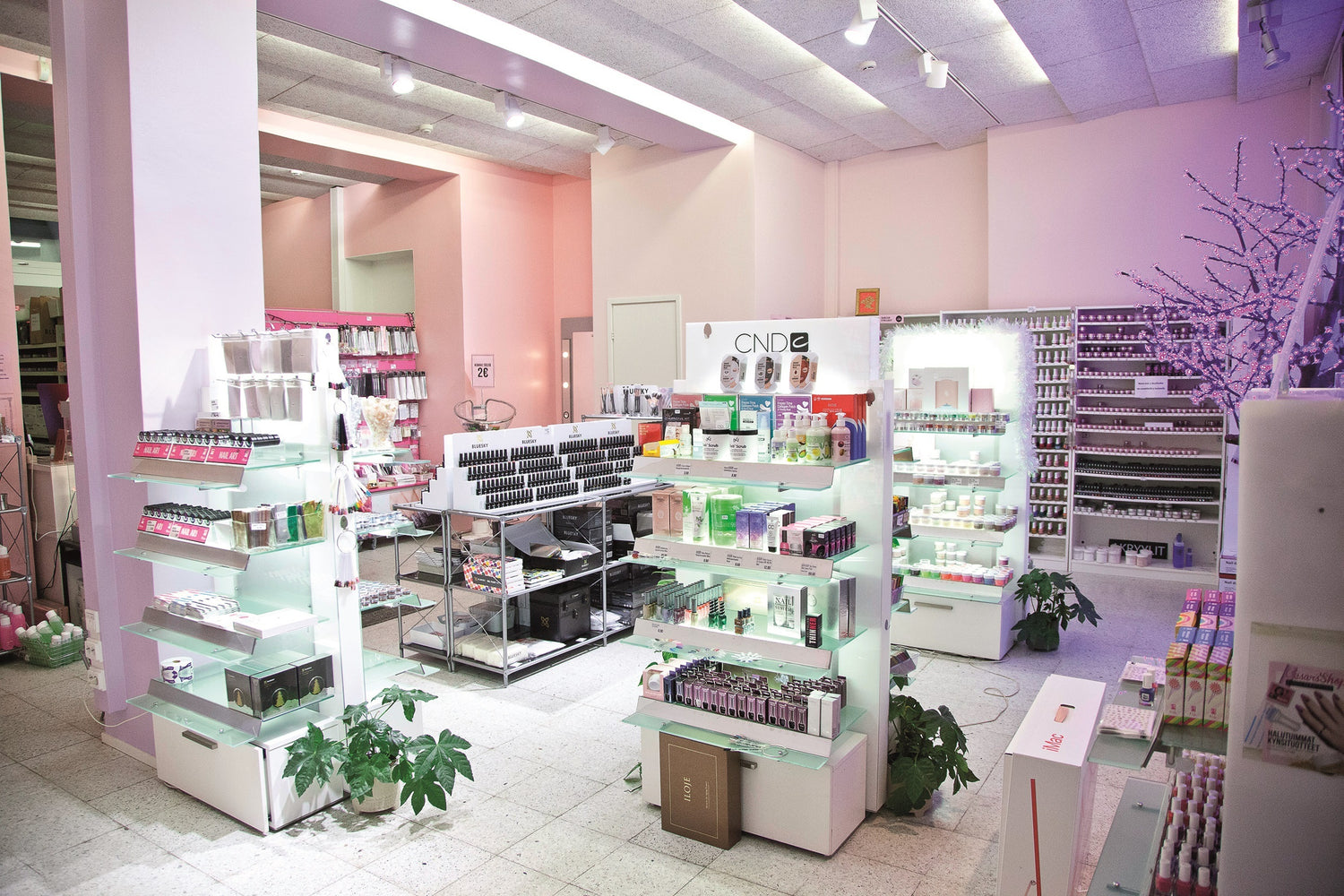Gel polish is a popular way to get long-lasting and beautiful nails, but like any beauty treatment, it can come with its own challenges. Sometimes it can feel like no matter how well you follow the instructions, the end result isn't perfect. In this blog post, we'll go over the most common problems that can occur during gel polish application, and give you tips on how to avoid them.
1. Gel polish peeling from the cuticle line
A very common problem is that the gel polish comes off in a whole strip or starts to flake off at the edges or near the cuticles. There are several factors that affect the durability:
- Trimming the cuticles: A neat and lasting gel polish starts with a carefully prepared base. If cuticles have grown over the nail, it is important to push them out of the way. Polish applied over the cuticles can easily peel off at the edges and is also a risk for developing allergies.
- Roughening the nail surface: The nail surface should be lightly roughened so that the polish adheres well. We recommend using a softer buffer file for roughening natural nails. If you file your natural nails too much, this will also cause problems with durability!
2. Gel polish chipping or peeling off the tip of the nail
This is one of the most common problems with gel polish, and there are a few solutions:
- A stronger base coat: If your natural nail is weak and bends easily, the gel polish will not bend with the nail and therefore the polish will peel off. The solution to this is a thicker and stronger base coat, so that the nail cannot bend and the polish will stay on the nail. If the strengthening base coat is not strong enough, you can also use a builder or gum gel.
-
Thicker layer: If the layers of gel polish are too thin, the polish will be weak and may start to crack with use.
-
Tip protection: Gel polish peeling off the tip can also be caused by not properly sealing the tip of the nail. So remember to apply gel products all the way to the tip of the nail if the nail is long enough.
- Gel polish application is usually started after nail preparation with a base coat. Depending on the quality of the nail, base coat alone is not enough for everyone, and optional base products must be used before that.
Often the nails are so wet that the cleanser is not enough to dry them. In this case, an absolutely essential product is Blueskyn PH Bond (also known as a dehydrator), which solves many durability problems. In addition, you can try a primer from their own series or a different base coat.
What is a base coat? A base coat is a base layer used in gel polish that prepares the natural nail for the application of color. A base coat is an essential product in gel polish that fixes the gel polish to the nail and extends the duration of the polish. A base coat is not only a base for gel polish, but also plays an important role in protecting the natural nail.

Bluesky Base Coat Gel base coat
What is ph bond? Ph bond is an optional, but after base coat, the most important base product that cleans and dries the surface of the natural nail. This product also adjusts the pH balance of the nail before applying gel polish. It is designed to remove excess oil and moisture from the nail surface, allowing the gel polish to adhere better. Ph bond evaporates after application, meaning it does not need to be cured.

4. Under-curing of gel polish
The sticky surface of gel polish and its proper curing raises many questions. Gels are characterized by a sticky surface after curing, which is completely normal and helps the layers adhere to each other. If the polish has not cured properly, it will be soft throughout and the surface will be wrinkled. Under-cured polish can cause allergies, so it is important to find the cause.
- Gel polish applied too thickly: Especially in dark and pigmented shades, a layer that is too thick prevents the product from curing properly. A layer that is too thick also increases the risk of allergies, as light rays do not penetrate a thick layer of polish and the gel polish does not cure completely. So it is better to apply two thinner layers than one that is too thick!
- The UV/LED light is the wrong type or ineffective: There are different types of lamps and gel polishes, so it is important to know which products to use and whether they work together. Bluesky and Inveray gel polishes cure in 2 minutes with a UV lamp and 60 seconds with an LED lamp. It is always worth checking which light the products you are using cure with, these days LED ovens and more common. UV/LED combination ovens are the most effective, where 60 seconds is enough.
Different brands of ovens also have different wavelengths of light, which can lead to under-cured gel. We recommend using the nail products brand's own oven or checking the compatibility of the oven and polishes to ensure proper curing of the gel.
5. Hypersensitivity or allergic reaction
Gel polish has become increasingly popular, but like all cosmetic products, gel polish can cause hypersensitivity reactions and allergies. Although gel polish is generally safe, some people may experience skin irritation or allergic reactions to the ingredients in the gel. This can cause redness, swelling, itching or even a rash around the nail. So use gel products carefully, and avoid skin contact with gel products! Uncured gel or gel that has come into contact with the skin can trigger an allergy from just one use. Wipe gel products off your skin immediately with a cleanser, and do not harden your nails if you have gel products on your skin. If you suspect an allergy, it is important to stop using gel polish and consult a dermatologist. Applying gel polish can be challenging, but with a little care and the right techniques, most problems can be avoided. So remember to prepare your natural nails carefully, apply the gel evenly, avoid skin contact with gel products, and ensure the correct curing time.



